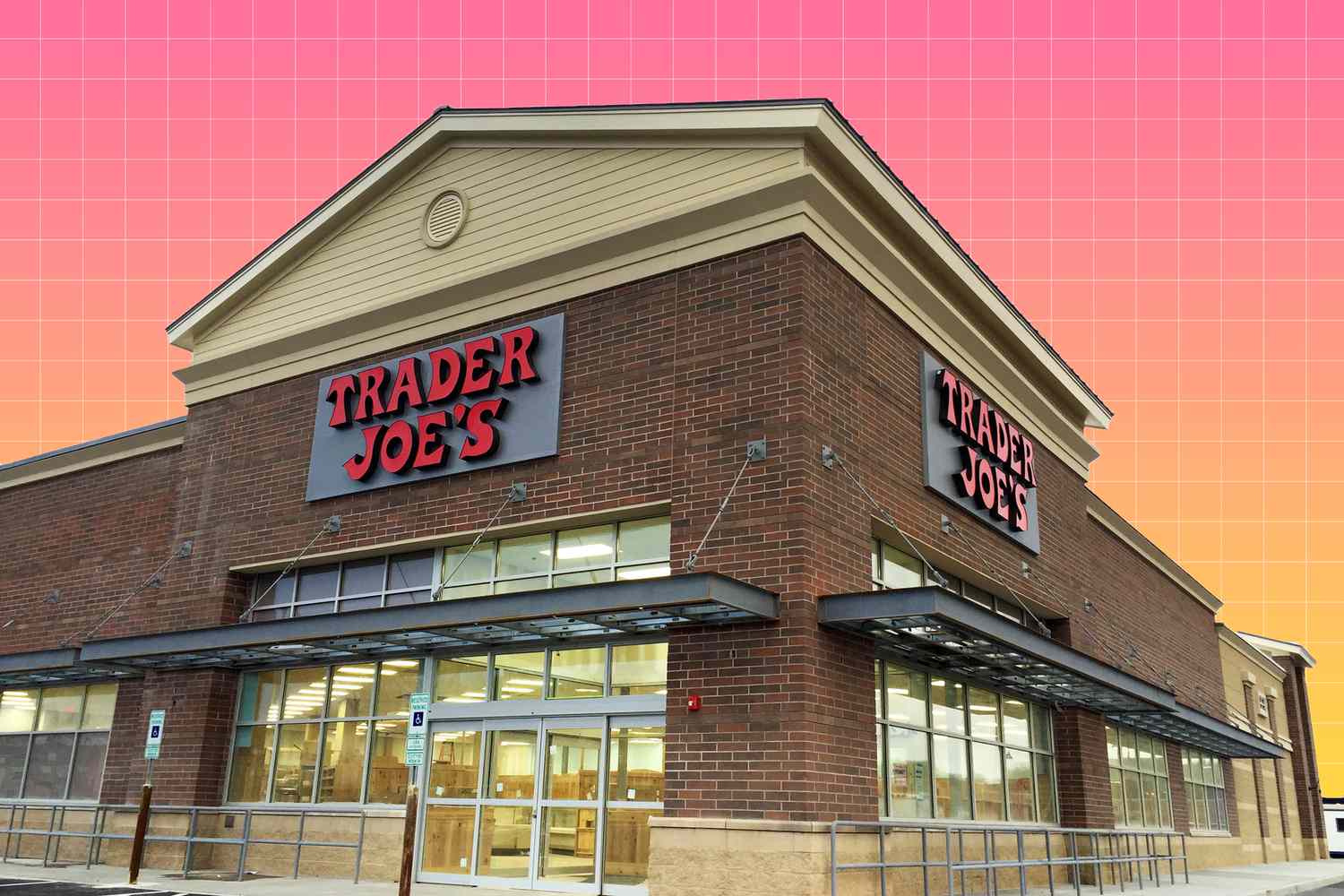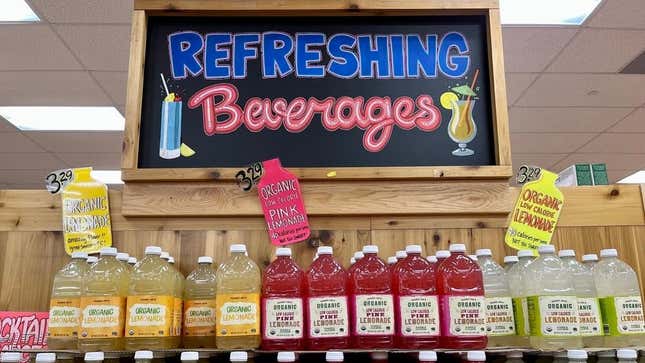The Reason Behind Trader Joe’s Lack of Online Store
Trader Joe’s, known for its quirky and unique selection of groceries, has managed to establish a devoted following of loyal customers. However, one thing that sets Trader Joe’s apart from other major grocery chains is its surprising lack of an online store. Despite the increasing popularity of online shopping, Trader Joe’s has chosen to stick to its brick-and-mortar approach. This decision may seem puzzling, but as you delve deeper into the reasons behind Trader Joe’s resistance to an online presence, you’ll discover a business strategy that centers around customer experience, value, and a touch of old-fashioned charm.

The Unique Shopping Experience of Trader Joe’s
Trader Joe’s is known for providing a shopping experience like no other. Unlike traditional supermarkets, Trader Joe’s focuses on in-person customer interaction to create a sense of discovery. As you step into the store, you’ll notice the friendly and knowledgeable staff who are always ready to assist you. They take the time to answer your questions, offer suggestions, and engage in casual conversations. This personalized approach makes the shopping experience feel more welcoming and enjoyable. At Trader Joe’s, shopping is not just a chore, but an adventure waiting to unfold.
Focus on In-Person Customer Interaction
One of the key aspects that sets Trader Joe’s apart is its emphasis on in-person customer interaction. The staff members are genuinely passionate about the products they sell, and they eagerly share their knowledge with you. They are always ready to guide you through the store, provide recommendations, and even offer samples to help you explore new flavors and products. This level of engagement creates a sense of community and allows you to build a relationship with the store and its employees.
Creating a Sense of Discovery
Trader Joe’s prides itself on creating a sense of discovery for its customers. The store layout is intentionally designed to encourage exploration and curiosity. From the colorful artwork on the walls to the unique product displays, every corner of Trader Joe’s invites you to discover something new. Rather than being overwhelmed by extensive choices, you are presented with a thoughtfully curated selection of products. This approach fosters a sense of excitement, as you never know what hidden gems you might find during your shopping trip.
Cultivating a Unique Shopping Environment
When you enter Trader Joe’s, you enter a world of its own. The store’s interior is warm and inviting, with its Hawaiian-inspired decor, wooden shelves, and playful signage. It has a distinct ambiance that feels different from a typical supermarket. Trader Joe’s intentionally cultivates this unique shopping environment to create a pleasant and memorable experience for its customers. The lively atmosphere, coupled with the abundant samples and friendly staff, makes every visit to Trader Joe’s a delightful and special occasion.
Operational Challenges
While Trader Joe’s provides an outstanding shopping experience, it does face operational challenges that come with its unique approach.
Maintaining Product Quality and Freshness
Trader Joe’s places a strong emphasis on product quality and freshness. However, this commitment comes with its challenges. Ensuring that every item meets the store’s high standards requires meticulous attention to detail and frequent quality checks. Trader Joe’s invests significant effort and resources into maintaining the freshness of its products, from regular stock rotation to proper storage and temperature control. Despite these challenges, Trader Joe’s remains committed to delivering top-notch quality to its customers.
Difficulty in Handling Perishable Items
As Trader Joe’s offers a wide range of fresh and perishable items, such as fruits, vegetables, and dairy products, there is a constant need for careful handling and timely restocking. Perishable items have a limited shelf life, and their freshness is crucial to customer satisfaction. Trader Joe’s faces the challenge of minimizing waste and efficiently managing inventory to ensure that the perishable items reach customers at their peak freshness. This requires close coordination between suppliers, distribution centers, and individual store locations.
Complex Inventory Management
Trader Joe’s unique selection of products poses a challenge for inventory management. The store offers a diverse range of items, from international and specialty products to everyday staples. Managing and replenishing these products can be complex, as the demand for certain items can be unpredictable. Trader Joe’s uses a sophisticated inventory management system that combines data analytics, sales forecasting, and supplier partnerships to ensure that the shelves are always stocked with customers’ favorite products.
Ensuring Proper Handling of Specialty Products
Trader Joe’s is known for its extensive selection of specialty products that cater to diverse tastes and dietary preferences. These products often require specialized knowledge for proper handling and accurate labeling. Trader Joe’s invests in thorough training for its staff to ensure they understand the unique characteristics and requirements of these specialty items. This attention to detail allows customers to confidently explore new products, knowing that Trader Joe’s has taken the necessary measures to provide accurate information and safe handling.

Limited Distribution Network
Trader Joe’s operates with a deliberate focus on its physical store locations, which poses challenges when it comes to distribution and expansion.
Concentration of Physical Stores in Certain Areas
Trader Joe’s store locations are strategically concentrated in specific regions, which allows for efficient supply chain management and easier access to distribution centers. However, this concentration can also lead to challenges for customers in areas without nearby stores. If you are not located near a Trader Joe’s, you may have limited options when it comes to accessing their unique products and shopping experience. The store’s limited distribution network is intentional, focusing on areas where they can deliver the best service and maintain their personalized approach.
Challenges in Scaling Delivery Infrastructure
Trader Joe’s has remained cautious in expanding its online delivery services, which can face challenges in scaling the delivery infrastructure. While many other retailers rush to offer widespread delivery options, Trader Joe’s is committed to ensuring that their distinctive shopping experience translates seamlessly into online orders. Scaling the delivery infrastructure would require significant investment in resources and technology to maintain the high level of customer satisfaction that Trader Joe’s aims to provide.
Higher Costs for Expanding Operations
Expanding the physical store network comes with its own set of costs and considerations. Trader Joe’s maintains a focus on store locations that are within a manageable distance from their distribution centers, which helps minimize costs related to transportation and logistics. Expanding operations to new areas would require additional investment in leasing, staffing, and establishing sustainable supplier relationships. Trader Joe’s careful approach to expansion helps ensure that they can offer their unique shopping experience while managing costs effectively.
Strategic Focus on Existing Store Locations
Despite the challenges posed by a limited distribution network, Trader Joe’s maintains a strong strategic focus on its existing store locations. By continually innovating and improving the in-store experience, Trader Joe’s aims to strengthen customer loyalty and satisfaction. Rather than spreading their resources thin with widespread expansion efforts, Trader Joe’s prioritizes enhancing the experience of customers within their current store locations. This strategic focus allows them to provide unparalleled service and maintain their reputation for exceptional customer engagement.
Profitability and Cost Considerations
Trader Joe’s operates in a highly competitive industry where profitability can be challenging. They also face additional expenses when it comes to online operations.
Thin Profit Margins for Groceries
The grocery industry operates on thin profit margins, and Trader Joe’s is no exception. Being a value-oriented retailer, Trader Joe’s prices its products competitively, which can impact their gross margins. Despite this challenge, Trader Joe’s continues to prioritize delivering high-quality products and exceptional customer service, even if it means accepting thinner profit margins. By focusing on building customer loyalty and repeat business, Trader Joe’s aims to compensate for lower profit margins through increased customer satisfaction and higher overall sales volume.
Additional Expenses for Online Operations
Expanding into the online market comes with its own set of expenses and operational considerations. Developing and maintaining an online platform involves investment in technology, logistics, and staffing. Additionally, providing a seamless online shopping experience requires efficient coordination between the physical stores, distribution centers, and delivery partners. These additional expenses factor into Trader Joe’s decision to be cautious about expanding its online presence, as they want to ensure that the transition from in-store to online maintains the quality and personal touch they are known for.
Effect on Overall Business Performance
The decision to not have an online store has an impact on Trader Joe’s overall business performance. While online grocery shopping has gained popularity, Trader Joe’s distinctive in-person shopping experience remains an integral part of their brand identity. By focusing on their physical stores, Trader Joe’s can concentrate on creating a unique and engaging environment that keeps customers coming back. While online grocery shopping continues to grow, Trader Joe’s believes that their commitment to in-person customer interaction and the sense of discovery they create will continue to be their competitive advantage.

Brand Differentiation and Customer Loyalty
Trader Joe’s has successfully built a unique brand image and enjoys a cult following among its customers. This brand differentiation is critical to their success.
Unique Brand Image and Cult Following
Trader Joe’s has carefully crafted a brand image that resonates with its target audience. The store exudes an aura of quirkiness and adventure, reflected in its product selection, store decor, and engaging staff. Trader Joe’s deliberately cultivates this brand image to differentiate itself from other grocery retailers. This distinctiveness has garnered a loyal following among customers who appreciate Trader Joe’s commitment to quality, affordability, and the sense of community it fosters. By creating a unique brand identity, Trader Joe’s sets itself apart and attracts customers who seek a memorable and enjoyable shopping experience.
Building Customer Relationships
Trader Joe’s understands the importance of building strong customer relationships. The friendly and approachable staff members play a crucial role in fostering these relationships. They remember your preferences, make personalized recommendations, and genuinely care about your shopping experience. Trader Joe’s also encourages customer engagement through initiatives like the “Fearless Flyer” newsletter, which highlights new products, shares recipes, and connects with customers on a personal level. These efforts foster a sense of loyalty and make customers feel valued, reinforcing their connection with the Trader Joe’s brand.
Reducing Risk of Negative Online Experiences
While online shopping offers convenience, there are inherent challenges when it comes to delivering the same level of personalization and customer engagement that Trader Joe’s is known for. By focusing on in-person shopping, Trader Joe’s can reduce the risk of negative online experiences that may arise from miscommunication, delivery errors, or dissatisfaction with product quality. This strategic decision allows Trader Joe’s to maintain its commitment to exceptional customer service and minimize potential negative interactions that could harm its brand reputation.
Concerns over Product Availability
One potential drawback of Trader Joe’s commitment to a unique shopping experience is the potential for product availability challenges.
Maintaining Stock and Variety in Stores
Trader Joe’s offers a carefully curated selection of products, but this can pose challenges in terms of maintaining stock levels and variety within individual stores. As popular items tend to fly off the shelves quickly, there is a constant need for replenishment and restocking. Trader Joe’s invests in rigorous inventory management practices and maintains close relationships with suppliers to ensure that the most popular items are consistently available to customers. However, occasional shortages may occur due to high demand or unexpected supply chain disruptions.
Difficulty in Meeting Online Demand
As Trader Joe’s online delivery services are limited, meeting the demand for online orders can be challenging. Online shopping has gained significant traction, and customers may look to purchase Trader Joe’s products conveniently from their homes. However, expanding the online distribution network to meet this demand would require extensive investment and could potentially impact the store’s ability to deliver the same level of personalized service that customers have come to expect. Trader Joe’s carefully balances the demand for online shopping with their commitment to maintaining a unique shopping experience.
Avoiding Disappointment for Online Shoppers
Given the limited availability of Trader Joe’s products online, there is a risk of disappointment for online shoppers who may not find their desired items in stock. While Trader Joe’s strives to provide accurate product information and availability on their website, the dynamic nature of inventory levels may lead to occasional out-of-stock situations. By maintaining a focus on their physical store locations, Trader Joe’s aims to minimize these instances and ensure that customers have a better chance of finding their favorite products in-person.

Focus on Sustainability and Environmental Impact
Trader Joe’s recognizes the importance of sustainability and its environmental impact. They take several initiatives to minimize waste and promote responsible practices.
Reducing Packaging Waste
Trader Joe’s actively works towards reducing packaging waste. They strive to use minimalistic packaging that is both functional and environmentally friendly. Trader Joe’s offers many products in their “Reduced Guilt” line, which emphasizes healthy options with reduced packaging waste. Additionally, they encourage customers to bring their own reusable bags, reducing reliance on single-use plastic bags. These efforts reflect Trader Joe’s commitment to sustainability and their dedication to minimizing the environmental impact of their operations.
Minimizing Carbon Emissions
Trader Joe’s understands the importance of reducing carbon emissions and actively takes steps to minimize its environmental footprint. They employ various strategies to optimize transportation efficiency, such as minimizing the number of miles traveled between distribution centers and stores. Additionally, Trader Joe’s promotes local sourcing to reduce the distance traveled by products, thereby further reducing carbon emissions. These sustainability initiatives align with their commitment to responsible business practices and contribute to a healthier planet.
Promoting Local Sourcing and Community Impact
By prioritizing local sourcing, Trader Joe’s supports local farmers and suppliers, as well as reducing the environmental impact of transportation. This commitment to community impact extends beyond environmental considerations. Trader Joe’s actively engages with local organizations and partners with food banks to donate excess food. These community-centric initiatives further reinforce their dedication to making a positive impact on the communities they serve. By choosing Trader Joe’s, customers can be confident that their shopping decisions contribute to local and global sustainability efforts.
Data Privacy and Security Concerns
As online transactions become increasingly prevalent, ensuring data privacy and security is of paramount importance to Trader Joe’s.
Protecting Customer Information
Trader Joe’s prioritizes the protection of customer information. They implement robust data security measures to safeguard personal and financial data. By following industry best practices and working with reputable technology partners, Trader Joe’s aims to instill confidence and trust in their customers when it comes to online transactions. The store is fully committed to upholding stringent data privacy standards to protect its customers’ sensitive information.
Ensuring Secure Online Transactions
Trader Joe’s invests in secure online transaction infrastructures and partners with trusted payment processors to ensure that customer transactions are encrypted and protected. By utilizing advanced encryption technologies and PCI-compliant systems, Trader Joe’s aims to provide a secure online shopping experience. These measures help reassure customers that their personal and payment information is handled with utmost care, providing peace of mind during online transactions.
Minimizing Potential Data Breaches
Trader Joe’s proactively monitors and updates their systems to minimize the risk of data breaches. By staying vigilant and investing in robust security measures, they aim to protect against potential cyber threats. Trader Joe’s conducts regular security audits and provides comprehensive training to their employees to ensure that they are aware of best practices and potential vulnerabilities. While no system is completely immune to threats, Trader Joe’s takes significant precautions to minimize the likelihood and impact of any potential data breaches.

Customer Feedback and Preferences
Trader Joe’s places a strong emphasis on understanding customer feedback and preferences to continually improve their offerings and provide a tailored experience.
Desire for In-Person Shopping Experience
Trader Joe’s recognizes that many customers value the in-person shopping experience. The personal interaction with staff, the chance to sample products, and the sense of discovery are all part of what customers seek when they choose to shop at Trader Joe’s. By focusing on in-person shopping, Trader Joe’s can provide the unique experience that their customers desire, fostering a sense of loyalty and creating a positive shopping environment.
Preference for Social Interaction
For some customers, grocery shopping is more than just picking up items—it’s an opportunity for social interaction and connection. Trader Joe’s understands this preference and actively encourages friendly and engaging experiences. Their staff members are trained to offer assistance in a personable manner, sparking conversations, sharing recommendations, and making customers feel at home. By placing importance on social interaction, Trader Joe’s creates a welcoming environment that customers enjoy being a part of.
Unique Consumer Demographics
Trader Joe’s has a distinct customer base that sets it apart from other grocery retailers. The store attracts customers who appreciate the unique and diverse product selection, value-driven pricing, and personalized service. Trader Joe’s caters to a wide range of consumer demographics, including health-conscious individuals, eco-conscious shoppers, foodies, and those seeking specialty and international products. This unique customer mix contributes to the vibrant and inclusive atmosphere that makes Trader Joe’s stand out.
Potential Future Strategies and Adaptation
While Trader Joe’s has remained cautious about expanding its online presence, they are not oblivious to changing market dynamics. The future may hold new strategies and adaptations to meet evolving customer needs.
Exploring Click-and-Collect Options
As customer demand for online shopping and convenience increases, Trader Joe’s may explore click-and-collect options. This approach would allow customers to place their orders online and collect them at designated pickup locations, reducing the reliance on full-scale delivery services. Click-and-collect options can provide a balance between the personalized in-person experience and the convenience of online transactions, catering to a broader customer base while maintaining the unique characteristics that define Trader Joe’s.
Partnering with Local Delivery Services
Trader Joe’s may also choose to partner with local delivery services to expand their online presence while maintaining operational efficiency. By leveraging existing delivery infrastructure and expertise, Trader Joe’s can extend its reach to customers who prefer online shopping. Partnering with third-party delivery services would allow Trader Joe’s to focus on its core strengths—providing exceptional products and a unique shopping experience—while ensuring that customers in geographically diverse areas have access to their offerings.
Gradual Expansion of Online Presence
Trader Joe’s may opt for a gradual expansion of their online presence, carefully evaluating market trends and customer preferences. Instead of a sudden and wide-scale shift, Trader Joe’s may take an incremental approach to online operations. This strategy would allow the store to maintain quality control and continually adapt their processes to ensure a seamless transition from the in-person shopping experience to online shopping. By carefully scaling their online presence, Trader Joe’s can preserve the unique traits that have made them a beloved grocery retailer.
In conclusion, Trader Joe’s offers a unique shopping experience that focuses on in-person customer interaction and a sense of discovery. While they face operational challenges in maintaining product quality, ensuring proper handling of specialty items, managing inventory, and expanding their distribution network, Trader Joe’s maintains a strategic focus on their existing store locations and the brand differentiation that comes with it. They navigate profitability and cost considerations while staying committed to their core principles of quality and customer satisfaction. Trader Joe’s recognizes the importance of sustainability, data privacy, and customer feedback. While they do not currently have an online store, they continue to explore potential future strategies to adapt to changing customer needs, such as click-and-collect options and partnering with local delivery services. Trader Joe’s commitment to offering a unique shopping experience and prioritizing in-person customer engagement remains at the forefront of their business model, making them a beloved and distinctive grocery retailer.











